
Mimmo Rotella is best known for his décollage works. He first began using this technique in the 1950s when he discovered the advertising banenr as an artistic expression of the city.
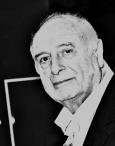
Alessandro Mendini was born in Milan in 1931. He directed the magazines Casabella, Modo and Domus. Monographs on his work and his projects with the Alchimia group have been published in several languages.
His focus is on objects, furniture, concept interiors, paintings, installations and architecture. He is a design and image consultant to many different kinds of companies all over the world.
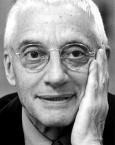
Gaetano Pesce was born in La Spezia in 1939.
He studied Architecture at Università IUAV di Venezia and then the Instute of Industrial Design, Venice.
During the 1960s he created many items thathave become icons of Italian Design and in 1972 he took part in the exhibition “Italy: The New Domestic Landscape” at the Museum of Modern Art, New York.
He has lived and worked in New York since 1983.
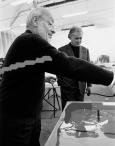
Denis Santachiara began working as a designer in 1980. He mainly concentraits on the linguistic and poetic potential of objects and on the comunication of the artificial world and new technology with industral aesthetics. He has created objects that breach the gap between art, design and industrial design that have featured in the Biennale di Venezia, Documenta 8 Kassel, the Triennale di Milano '82-'84-'86 , the Quadriennale di Roma 1999 and the Mostra Museo di Losanna.
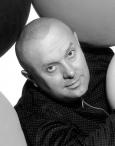
Karim Rashid was born in Cairo, Egypt in 1960; half-English, half Egyptian and raised mostly in Canada. He received a Bachelor of Industrial Design in 1982 from Carleton University in Ottawa, Canada andwent on to pursue his graduate design studies in Naples, Italy, with Ettore Sottsass and others. On his return to Canada, he worked for seven years with KAN Industrial Designers. While at KAN, he also co-founded and designed the Babel Fashion Collection and North from 1985-91. He opened his own practice in New York City in 1993.
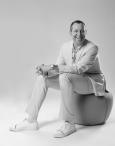
Donato D'Urbino and Paolo Lomazzi were born in 1935 and 1936 in Milan where they work together on archtectural projects and product, furniture and exhibition design.
They founded the studio "De Pas, D'Urbino, Lomazzi" in 1966 together with the architect Jonathan De Pas who died in 1991.
In the 1960s they developed a particular interest in the creation of temporary furniture and architecture, such as the famous "Blow" armchari for Zanotta.
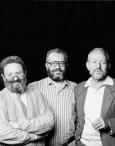
Andrea Salvetti was born in Bozzano near Lucca on 10th August 1967. After specialising in the arts at school he went on to study Architecture at the University of Florence.
In 1993 he started his work a san artist-artisan in his laboratori in the Tuscan hills where he created furniture-sculptures with particolar attention to the combination of new technology and ancient techniques.
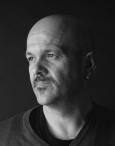
Anna Gili’s way of thinking is greatly influenced by her Umbrian background and the culture of the Italian “Rinascimento” but also by the impact of the Milanese design scene when she arrived in the city in 1984.
She started expressing her ideas through performance art and installations which then led on to her first objects of design.
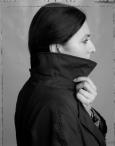
Alberto Biagetti was born in Santarcangelo di Romangna in 1971.
He draws, with extreme lightness and apparent ease, glass microcosms and houses of mirrors, coloured bones and inexistent horizons, oscillating between the ancient and oriental, between serious and playful and between poetry and chaos. His work is the result of multiple linguistic inventions that generate objects, paintings and installations that can be found in galleries and private collections.
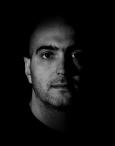
Massimiliano Adami was born in Monza in 1969 and studied design at the Istituto Statale di Monza and then at the Facolty of Design at the Politecnico di Milano. Since his debut in 1998 with the exhibition “Il fantasma del design” (“The Ghost of Design”) he participated in numerous competitions and exhibitions up until he took part in the Salone Satellite in 2005, 2006 and 2008.
Thanks to his experimentation with materials and artisanal techniques his work can be placed between art and design combining the design process with the art of hand-making his pieces himself.

Vibrazioni Art-Design create unique works that oscillate between art and design. The pieces are characterised by the recycled materials that present variations and surfaces rich with memories. They are constructed using basic mechanical methods (e.g. rivetting) that become an integral part of the final aesthetics of the products. Nothing is concealed, the skeleton becomes aesthetics and viceversa. Particular attention is paid to colour and the union between old and new structural forms that create visual contrasts - Imperfection becomes style.
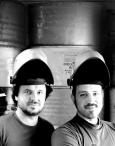
Carlo Poggio was born in Alessandria. With Beppe Gallini, De Pas, D’Urbino and Lomazzi he created an architectural system to design and create infinite modular spaces.
In 1983 he founded the brand ZERO and in 1988 he opened the ZERO US Corporation. In 1992 he opened the ZERO Soho showroom in New York where he was recognised as having contributed to culturally and creatively improve life in New York.
In 1991 he created the brand ZERODISEGNO and in 2008 he founded Carlo Poggio Design.
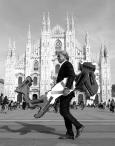
Marco Ferreri was born on 26th February 1958 in Imperia and graduated in Architecture from the Politecnico di Milano in 1981. He has lived and worked in Milan since 1984. His works vary from industrial to graphic design and from architecture to exhibition design.
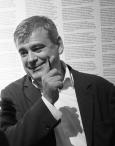
Matter is form and so it is life, and for Angi it is synonym of hope and communication. Angi uses his days' material, plastic, to offer man a secon chance, to make him understand he must be again the absolute leading actor of the scene, using materials and techniques of his time. The artist is inspired by the ever more ephemeral border between the natural and the artificial world.
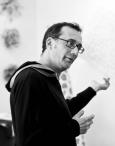
Matter is form and so it is life, and for Angi it is synonym of hope and communication. Angi uses his days' material, plastic, to offer man a secon chance, to make him understand he must be again the absolute leading actor of the scene, using materials and techniques of his time. The artist is inspired by the ever more ephemeral border between the natural and the artificial world.
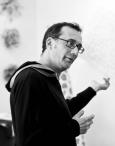
Matter is form and so it is life, and for Angi it is synonym of hope and communication. Angi uses his days' material, plastic, to offer man a secon chance, to make him understand he must be again the absolute leading actor of the scene, using materials and techniques of his time. The artist is inspired by the ever more ephemeral border between the natural and the artificial world.
